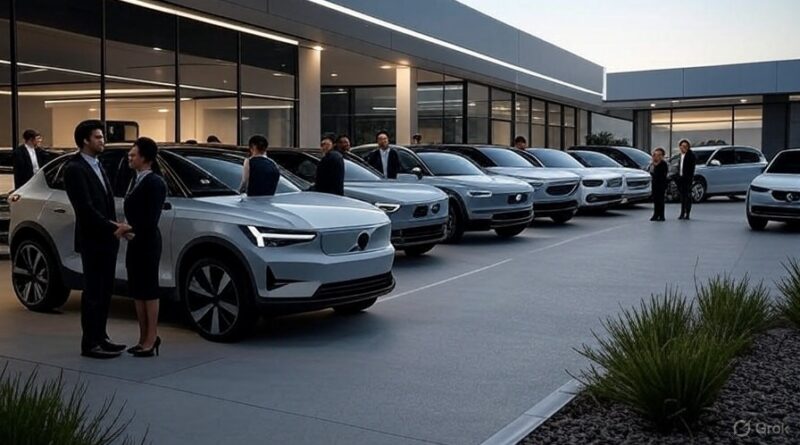Volvo Cars CEO Says Its Customers Must Pay for Rising Tariffs
As trade tensions escalate, Volvo Cars CEO Jim Rowan has stated that customers will have to absorb the cost increases brought on by new U.S. tariffs targeting vehicles imported from the European Union and China. The automaker finds itself caught between global production strategies and the growing complexity of international trade policies.
Rising Tariffs and Volvo’s Response
The decision comes in light of the U.S. government’s plan to impose 50% tariffs on electric vehicles imported from China, as part of a broader effort to curb foreign EV dominance and promote local manufacturing.
Volvo’s compact electric SUV, the EX30, is one of the most directly impacted models. Originally manufactured in China and aimed at budget-conscious U.S. buyers with a starting price around $35,000, the vehicle now faces significant cost increases.
To avoid the steep tariff, Volvo has shifted EX30 production to Belgium, which is expected to allow tariff-free access under EU–U.S. trade agreements. However, the move raised the EX30’s base price in the U.S. to $46,195, a jump that Volvo says will be passed on to customers.
CEO: Tariffs Will Hit the Consumer
In a statement, CEO Jim Rowan acknowledged that the company’s profit margins are under pressure and that end buyers will ultimately bear the cost of the new tariffs.
“We simply can’t absorb all the added costs ourselves,” Rowan explained. “As a result, the impact will inevitably be seen in vehicle pricing.”
This candid admission has stirred debate, with critics arguing that automakers must do more to shield consumers from the volatility of international politics.
Delayed U.S. Launch and Strategic Production Shift
Volvo delayed the U.S. launch of the EX30 to realign its supply chain, moving production to Europe in April 2025. However, even with this shift, the vehicle remains more expensive than initially planned, raising concerns about its competitiveness in the American EV market.
Volvo plans to increase production at its South Carolina plant, with the possibility of introducing a mid-sized plug-in hybrid model tailored for U.S. buyers. Still, expanding capacity may take up to two years, during which time the company risks losing ground to faster-moving rivals.
Market Reaction and Investor Concern
The announcement has not been well received by the stock market. Volvo shares fell 5% following Rowan’s statement, with investors expressing concern over the brand’s ability to maintain U.S. sales volume while navigating high tariffs and cost increases.
Volvo currently generates 16% of its global sales from the U.S., making it one of the company’s most crucial markets. Any disruption caused by pricing adjustments could have lasting financial implications.
Industry Implications
Volvo’s pricing strategy signals a broader industry trend: legacy automakers struggling to adapt to rapidly changing trade dynamics and growing protectionist policies. With tariffs now shaping supply chains, carmakers are being forced to:
- Reallocate production across continents
- Reprice vehicles to reflect geopolitical risks
- Compete with local EV startups that face fewer import barriers
Conclusion
Volvo Cars’ decision to pass rising tariff costs onto consumers highlights the tough choices carmakers face in today’s global economy. While shifting production to Europe may soften the blow, higher prices and delayed launches pose new challenges.
As global trade tensions reshape the automotive landscape, companies like Volvo must walk a tightrope between protecting profit margins and keeping their vehicles affordable. For consumers, it may mean paying more at the dealership for cars that were once priced to compete.
Buying a used VW. Buying used vauxhall, BMW, Jaguar, Ford, Volvo, Range rover, Bentley, Aston Martin, Porsche, Ferrari, Lamborghini, Maserati, Hyundai, Tesla, Honda, Pagani

